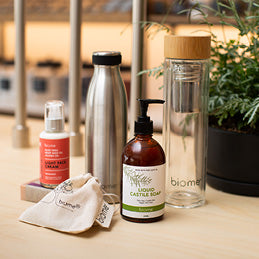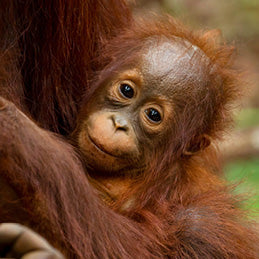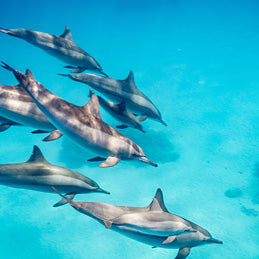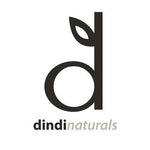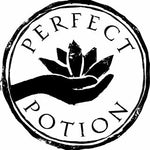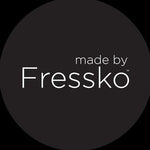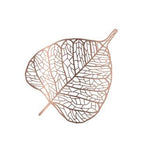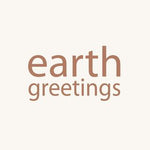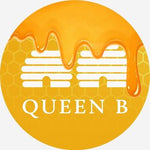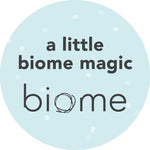
30+ Toxins and Harmful Ingredients You Will Not Find at Biome
Our Dirty Thirty list was created to help change the way our community thinks about what they put on their bodies.
This list highlights toxic ingredients commonly found in personal care products, including from brands claiming to be all natural. These harmful ingredients are, more often than not, used becuase because they are cheap and more profitable for the manufacturer.
With every range offered at Biome, it is not just the transparency and safety of the ingredients that is assessed, but the whole story of the brand and its makers. Products stocked at Biome not only need to have zero toxicity, but must perform, be of high quality, and be enjoyable to use.
Dirty Thirty
Animal Derived
You will not find at Biome these common ingredients in cosmetics and household products that are extracted from living or dead animals: Dairy, Leather, Collagen, Carmine (Cochineal), Tallow, Emu and other animal fats/oils, Guanine/Pearl Essence (fish scales used for sparkle in nail polish such as Butter London), Gelatin, Lanolin, Squalene (if from sharks), Ambergris (from whales), Estrogen / Estragiol, Retinol (Vitamin A), Musk, Keratin, Boar Bristles, Horsehair, Silk.
Some carefully selected products we offer do contain Beeswax or Honey (only from small, mindful, local producers) and non-mulsed sheep's wool.
Aluminium Compounds
A common active ingredient in deodorant & mostly antiperspirant. It is often linked to Alzheimer’s and brain disorders and is a possible risk factor in breast cancer. Aluminium based compounds in antiperspirants form a temporary plug within the sweat duct that stops the flow of sweat to the skin’s surface which then forces toxins to flow back into the bloodstream. Because underarm antiperspirants or deodorants are applied near the breast and contain potentially harmful ingredients, several scientists and others have suggested a possible connection between their use and breast cancer. However, no scientific evidence links the use of these products to the development of breast cancer. Also a suspected respiratory toxicity, human neurotoxicity. Aluminium compounds can be found in drinking water, antiperspirants, deodorants, vaccinations, baking powders, feminine hygiene products, cow & soy milk, baby formula, antacids, and of course aluminium foil, pots and pans.
Antimicrobials
See Triclosan.
Benzalkonium Chloride Cationic Surfactant
Petroleum derived and used an antistatic, deodorant & preservative. Restricted in cosmetics in Canada. Suspected respiratory, liver, immune & neuro-toxicity, allergy reactions & dermatitis. Found in facial moisturisers, baby lotion & some asthma inhalers.
Benzyl Benzoate & Benzyl Salicyte
Benzyl Benzoate EWG rating of 6, Benzyl Salicyte EWG rating of 7
Benzyl Alcohol
One range at Biome, Retreatment Botanics, contains synthetic, nature identical and COSMOS and ACO Organic approved Benzyl Alcohol used as a preservative. While we have avoided Benzyl Alcohol to this point at Biome, we wish to support the exceptional attributes of Retreament, particularly being a high performance palm oil free face care, and allow our customers to make a fully informed decision. The main concerns with Benzyl Alcohol (BA) are contact allergy and potential toxicity depending on the concentration and use. Thus it is restricted for use in cosmetics within certain concentrations (European Union and International Fragrance Association). Is there natural Benzyl Alcohol? While some brands claim they use naturally-derived Benzyl Alcohol, it is unlikely. Yes, BA is found in some plants and oils extracted from flowers like jasmine and ylang-ylang, but it is minute quantities and expensive. For most personal care products it is made in a lab mixing benzyl chloride with sodium hydroxide (which results in a natural identical chemical composition that can not be distinguished from that found in plants). At unsafe concentrations, it can be irritating to the skin and is not suitable for young children. It can affect the immune system causing itching, and burning of the skin. Certain synthetic BA at minute concentrations is an approved input in Certified Organic products and hence you will find it used in most certified organic skin care ranges. Ecostore is another brand that uses it. Ecostore states "Benzyl Alcohol is a synthetic chemical (no plant-based preservatives that meet our efficacy standards currently exist)" EcoStore uses synthetic Benzyl Alcohol in its cleaning and body products, including the kids range of Bubble Bath, Sleepy Time, Hand Wash.
BHA
Petroleum derived, highly toxic. Banned in the EU as a fragrance ingredient. Recognised carcinogen, wildlife and environmental toxicity. Chronic urticarial. Respiratory, liver, endocrine. Found in lipstick, lipgloss, lip liner, moisturiser & eye shadow.
BHT
Petroleum derived. Skin irritant, human skin toxicity, suspected liver, respiratory, kidney, immune and neurotoxicity.
BPA, BPB and BPS
Bisphenol A (BPA) is an industrial chemical that has been used to make certain plastics and resins since the 1960s. It’s used in containers that store food such as lunchboxes and water bottles and it’s in the lining of many food and beverage packaging to “protect” food from contamination and extend shelf life. Small amounts of BPA can migrate into food and beverages from containers, especially when heated in a microwave. Most metal products, such as tin food, bottle tops and water supply lines are lined with BPA-containing resin. Some dental sealants and composites also may contain BPA. It’s also used in non-food products. Exposure to BPA is a concern because of possible health effects of BPA on the brain, behaviour and prostate gland of foetuses, infants and children. It can potentially effect the liver and kidneys, and it may possibly affect reproductive, nervous, immune, metabolic and cardiovascular systems. Additional research suggests a possible link between BPA and increased blood pressure. BPA was singled out as the sole chemical of concern in the bisphenol group, and regulated as such. Manufacturers largely replaced BPA with bisphenol S (BPS), which researchers are now discovering is equally as problematic as BPA.
Note: In 2010, the Australian Government announced a voluntary phase out of BPA use in polycarbonate baby bottles.
Carmine. Cl 75470
A red pigment or dye derived from the insect (Coccus Cacti Beetle) native to South America and Mexico that live as parasites on cactus plants. Also referred to as cochineal, crimson lake or natural red 4,CI 75470, or E120. Used as a colourant in food, cosmetics and textiles. Has been associated with severe allergic reactions. This ingredient is listed in the PETA's Caring Consumer guide as a substance of animal origin. Carmine can be found in the following – lipstick, lip gloss, blush, eye liner, foundation, mascara.
Coal Tar (Aminophenol, Diaminobenzene, Phenylenediamine)
Antidandruff and denaturant. A by product of coal processing is a well known human carcinogen. Hair stylists and other professionals are exposed to these chemicals in hair dye almost daily. Banned in cosmetics in Canada & EU. Suspected mutagen & skin irritant. Found in hair dyes, soap & shampoo.
Cocamidopropyl Betaine (CAPB)
Although it can be initially derived from coconut it’s then mixed with harmful impurities such as dimethylamino propylamine. May be petroleum derived. Antistatic, cleansing foam boasting, surfactant. Suspected immunotoxicity, allergic reactions, may cause sensitisation. Found in toothpaste, body wash/cleansers, shampoo, baby soap, bubble bath.
DEA (Diethanolamine), MEA (Monoethanolamine) & TEA (Triethanolamine)
Often used in cosmetics to adjust the ph, and used with many fatty acids to convert acid to salt (stearate), which then becomes the base for a cleanser. TEA causes allergic reactions including eye irritation, dryness of hair and skin. Could be toxic if absorbed into the body over a long period of time. These chemicals are already restricted in Europe due to known carcinogenic effects. Repeated skin applications of DEA based detergents resulted in a major increase in the incidence of liver and kidney cancer.
1,4 Dioxane
Toxic by product of the ethoxylation process used to make some cosmetic products. Banned in cosmetics now in most countries. A known carcinogen. The EWG stated that it contaminates up to 46% of personal care products.
Dioxins
The term "dioxin" is commonly used for a family of toxic chemicals ound throughout the world in the environment. The highest levels of these compounds are found in some soils, sediments and food, especially dairy products, meat, fish and shellfish. Very low levels are found in plants, water and air. Dioxins are environmental pollutants. They are persistent organic pollutants (POPs). Dioxins are of concern because of their highly toxic potential. Experiments have shown they affect a number of organs and systems. They can cause reproductive and developmental problems, damage the immune system, interfere with hormones and also cause cancer.
Endocrine Disrupting Chemicals (EDCs) and EDA
Endocrine disrupting chemicals or compounds can mimic the hormone estrogen, a female sex hormone, & "interfere with the synthesis, secretion, transport, binding, action, or elimination of natural hormones in the body that are responsible for the maintenance of homeostasis (normal cell metabolism), reproduction, development, and/or behaviour." Any system in the body controlled by hormones can be derailed by hormone disruptors. EDC’s are also associated with altering the reproductive function in males and females; increased incidence of breast cancer, abnormal growth patterns and neurodevelopmental delays in children, as well as changes in immune function. EDC's are mostly human-made and can interfere with endocrine (or hormone systems). Found in various materials such as pesticides, metals, additives or contaminants in food, and personal care products. EDCs have been suspected to cause cancerous tumours, birth defects, and other developmental disorders.
Emulsifying Wax
Emulsifying wax is created when a wax material (either a vegetable wax of some kind or a petroleum-based wax) is treated with a detergent (typically sodium dodecyl sulfate or polysorbates) to cause it to make oil and water bind together into a smooth emulsion. It is a white waxy solid with a low fatty alcohol odour. The ingredients for Emulsifying Wax NF (meaning that it conforms to the specifications of the National Formulary) are: Cetearyl Alcohol, Polysorbate 60, PEG-150 Stearate, and Steareth-20. It has the characteristics of cetyl alcohol combined with the viscosity building effect of stearyl alcohol as an effective thickener and helps form stable emulsions.
Formaldehyde and Formaldehyde-Releasing Preservatives
(FRP’s) are highly potent and considered a known human carcinogen by The International Agency for Research on Carcinogens (IARC) and has been linked to occupational related cancers: nasal and nasopharyngeal. Formaldehyde though now restricted in Canada is still used in many cosmetic products to help prevent bacteria growth. In particular in nail polish and nail treatments. This chemical is also known to cause allergic skin reactions and may also be harmful to the immune system. It can also be found in body washes, conditioners, shampoos, cleansers, eye shadows, household cleaners & floor polish.
Fragrance/Parfum
An abundance of hidden chemicals! Phthalates being just one. This is a particular category that is very scary. It may help sell products from face cream to laundry detergent, but was does “fragrance” & parfum actually mean? A term initially created to protect a company’s “secret formula.” But as the consumer you could be putting on a concoction that contains thousands of chemicals that are hazardous to your health. According to the Environmental Working Group (EWG) Skin Deep Database and the Campaign for safe cosmetics, an average of 14 chemicals in 17 well known brand fragrance products were not listed on their labels. Fragrance mixes can contain hormone disruptors and are among the top 5 allergens in the world. Fragrance/parfum chemicals are also associated with allergies, dermatitis, headaches, dizziness, respiratory distress and potential effects on the reproductive system. It can be found in many products such as perfume, moisturisers, deodorants, aftershave, cologne, conditioner, shampoo and body wash to name a few. See more about this in Kate Grenville’s book – The Case Against Fragrance Triclosan Petroleum derived preservative.
Lead
Lead is a toxic metal that may cause a range of health effects, from behavioural problems and learning disabilities, to seizures and death. Children six years old and under are most at risk. The only lead we are aware of in Biome's range in some insulated water bottles and containers where it has been used to plug the hole under the outside base of the bottle that is created during manufacture. With all our insulated bottles/containers any lead spot is covered/sealed so that it is not exposed.
Melamine
Melamine is made primarily of synthetic polymers, including formaldehyde, and sometimes urea (restricted in Canada & animal derived). The compound is heat and pressure-treated, creating a resin that can be shaped and moulded for a variety of uses. It is used to make plastics, dinnerware, dishes, counter tops, eating utensils, laminates, flooring, pesticides, fertilisers and even commercial fish feed, and has in some cases been added to some milk products to falsely increase the apparent level of protein. Melamine alone is of very low toxicity (comparable to table salt), but when combined with cyanuric acid, animal studies have suggested that kidney problems occur. Melamine dish ware is often referred to as melamine, but is actually a polymer of melamine and formaldehyde. Melamine can leach into food and beverages (especially those that are acidic or warm).
Note that many of the "bamboo plastic" products on the market, such as children's plates and cups, contain Melamine to increase the durability of the bamboo plastic.
Mineral Oil - Paraffin Oil
Function - Antistatic and solvent. A by-product of petroleum that is used in baby oil, moisturisers, styling gels lip gloss, concealer, eyeshadow and lipstick. Suspected carcinogen, suspected respiratory and liver toxicity. May cause and aggravate acne. Skin irritant.
Nail Polish Chemicals
Whether 10 free, 5 free, "x Free" nail polishes are not "toxin free", nor eco nor natural. Even those promoted as the 'safest' of all nail polish still contain harmful, irritating, environmental toxins, and petrol-derived chemicals that are restricted in some countries, including plasticisers, solvents, fragrances, film formers, UV absorbers, caustics, polymers, even PET plastic. These ingredients are those commonly found in "x Free" polishes that you will not find at Biome: Dimethicone
Benzophenone-1
Ethyl Acetate
Butyl Acetate
N-Butyl Alcohol
Glyceryl Linoleate
Nitrocellulose
Isosorbide dicaprylate/caprate
Isopropyl Alcohol
Polyvinyl Butyral
Propylene Glycol
Methoxyisopropyl acetate
Tocopherol Acetate
Alumina
Polyurethane-67
Styrene/Acrylates Copolymer
Sucrose Acetate Isobutyrate
Acetyl Tributyl Citrate
Adipic Acid/Neopentyl Glycol/Trimellitic Anhydride Copolymer
Polymethyl Methacrylate
Stearalkonium Bentonite
Etocrylene
Diacetone Alcohol
Trimethyl Pentanediyl Dibenzoate
Phosphoric Acid
Trimethylsiloxysilicate
Polyethylene Terephthalate
HEXANAL
Isopropyl Myristate
Nitrosamines
N-nitrosamines (or nitrosamines), many of which are carcinogens, are used in the manufacture of cosmetics, pesticides, tobacco products and in most rubber products including rubber baby bottle teats, soothers, balloons and condoms. They can migrate into foods that contact the teat, such as milk and infant formula.
Note: Hevea (a rubber pacifier/soother brand that we stock) states the following on its website: Are Hevea pacifiers free from Nitrosamines? It is correct that nitrosamines can be found in natural rubber, but Hevea passes all the test and regulations for pacifiers, which also test for the amount of nitromines. If the limit is too high it can be dangerous, but we have NOT detected any in our products, and we have them tested randomly.
Oxybenzone
A sunscreen agent and ultraviolet light absorber. Commercially produced from benzene (petroleum). Restricted in Japan. Suspected liver and kidney toxicity. Absorbs through the skin. Associated with endocrine disruption. Suspected wildlife and environmental toxicity. Found in lip balm, fragrances, lipstick, moisturiser, anti aging creams, sunscreen.
Parabens (Propyl/Isopropyl/Isobutyl Parabens)
Petroleum derived preservatives. Possess estrogen-mimicking properties that are associated with increased risk of breast cancer. These chemicals are absorbed through the skin and have been identified in biopsy samples from breast tumours. They can be found in makeup, body washes, deodorants, shampoos and facial cleansers. You can also find them in food and pharmaceutical products. Suspected endocrine disruptors and cause reproductive and development disorders. Suspected skin or sense organ toxicity. Contact dermatitis and skin irritant. Wildlife and environmental toxicity.
Parfum
See Fragrance
PEGs
Very large family of conditioning and cleaning agents/solvents that go by many names and found in a wide range of cosmetics including hair products, toothpaste, facial cleanser, bar soap, makeup, deodorant, sunless tanning, shaving cream, baby products and conditioners. These petroleum based synthetic chemicals are frequently impure and contaminated with 1/4 –dioxane which is banned in most countries. Look for all ingredients starting with PEG -(followed by numbers.)
Perfluorinated Chemicals (PFCs) & PFOA
Perfluorinated Chemicals (PFCs) are widely used as industrial surfactants and are used in numerous consumer products for their stain/water resistant properties, such as products to resist grease, oil, stains, and water, and are also used in fire-fighting foam. PFC coated products may include non-stick cookware, Teflon® , GORE-TEX® , waterproof clothing, fast food wrappers, pizza boxes, popcorn bags, stain-resistant carpet, paint, and windshield washer fluid. There is widespread wildlife and human exposure to several PFCs. PFCs are persistent, bioaccumulative and toxic chemicals. They are suspected of causing liver damage, some cancers, alterations in thyroid hormone levels & may affect cell growth. Perfluorooctanoic Acid (PFOA, also known as C8) is a perfluorinated chemical (PFC). WWF has waged a Detox campaign against outdoor wear companies. These are used in Perfluorooctanoic acid (PFOA) and perfluorooctanesulfonic acid (PFOS) are the most researched of the PFC substances. The carbon-fluorine bond of these chemicals are incredibly strong, which makes it resist breakdown and causes PFCs to build up in the food web. Once PFCs are released into the environment, they remain indefinitely and do not break down.
Phenoxyethanol
Phenoxyethanol is a synthetic preservative & fragrance ingredient widely used in the cosmetics & personal care industry. A cheaper alternative to natural preservatives. Although it’s approved at 1% or less there are growing concerns on it’s safety. According to the chemical maze it’s a suspected reproductive and developmental toxin. Exposure may include headaches, tremors, eye irritation and depression. Toxic to the kidneys, nervous system and liver. EWG state concerns as it being an irritant to skin, eyes or lungs. Other concerns include organ system toxicity (non reproductive).
Phthalates
Phthalates (also called "plasticisers") are a group of petroleum derived chemicals used to make plastics like PVC more flexible and as solvents. Phthalates are used in hundreds of consumer products from household cleaners to food packaging, perfume/colognes, hairspray, deodorants, cosmetics, and many other personal-care products. Phthalates have been found to disrupt the endocrine system. Researchers have linked phthalates to asthma, attention-deficit hyperactivity disorder, obesity and type II diabetes, low IQ, neurodevelopmental issues, behavioral issues, autism spectrum disorders, altered reproductive development and male fertility issues. The main phthalates in cosmetics and personal care products are dibutyl phthalate in nail polish, diethyl phthalate in perfumes and lotions, and dimethyl phthalate in hair spray. They are known to be endocrine disruptors and have been linked to increased risk of breast cancer, early breast development in girls, and reproductive birth defects in males and females. Unfortunately, it is not disclosed on every product as it’s added to fragrances. See fragrance.
Propylene Glycol
Propylene glycol, petroleum derived, is a small organic alcohol commonly used as a skin-conditioning agent & solvent. It’s classified as a skin irritant and penetrator. It has been associated with causing dermatitis as well as hives in humans. These sensitization effects can be manifested at propylene glycol concentrations as low as 2 percent. It can be found in moisturizers, sunscreen, cleansers, bar soap, makeup products, conditioners, shampoo, hand cream and hair sprays. Also in food & pet shampoo.
PVC Polyvinyl Chloride
It's often reported that no other plastic presents such a direct environmental and human health threat as Polyvinyl Chloride (PVC) does throughout its lifecycle. PVC, is the world's third-most widely produced synthetic plastic polymer, after polyethylene and polypropylene. PVC contaminates humans and the environment throughout every phase of its lifecycle – during its production, use, and disposal – resulting in large quantities of carcinogenic, hormone disrupting and otherwise harmful chemicals contaminating our air, earth, water and food resources. Greenpeace has pushed for the cessation of PVC production as dioxin is created from the manufacture & incineration of the substance. Also, items made from PVC will retain their form for decades & breakdown that occurs is just granulation - pieces simply become smaller (which animals can ingest). PVC is also difficult to recycle given the presence of additives including heavy metals such as lead & cadmium. Currently under 1% of PVC is recycled.
Silicones & Siloxanes Synthetic Polymers
Function - Anti-foaming, binding, antistatic. Restricted in cosmetics in Canada. Absorbed via the skin & show marked effects on the adrenal glands and liver. Wildlife and environmental toxicity. Commonly found in colour cosmetics, hair care, deodorant, household cleaning products & solvents. Parabens Parabens are widely used preservatives that prevent the growth of bacteria, mould and yeast in cosmetic products. Sounds good, right? Not so fast, they do more than that.
Sodium Lauryl Sulfate (SLS) / Sodium Laureth Sulfate (SLES)
This petroleum derived surfactant can be found in more than 90 percent of personal care and cleaning products (think foaming products). SLS’s are known to be skin, lung, and eye irritants. A major concern about SLS is its potential to interact and combine with other chemicals to form nitrosamines, a carcinogen. These combinations can lead to a host of other issues like kidney and respiratory damage. They can be found in shampoo, conditioner, toothpaste, body wash/cleanser, liquid hand soaps, bubble bath, mascara and acne treatment.
Stearalkonium Chloride Cationic Surfactant
Petroleum derived and used as an antistatic & preservative in hair products. Suspected liver and neuro-toxicity. Skin irritant & allergic reactions. Found in Styling gels/waxes and conditioners. Contains toluene.
Sunscreen Chemicals
Most of these chemicals are petroleum derived and function as a sunscreen agent, to absorb ultraviolet light. These chemicals are endocrine disruptors and are believed to be easily absorbed into the body. They may also cause cellular damage and cancer in the body. Common names are benzophenone, PABA, avobenzone, homosalate and ethoxycinnmate. They can be found in sunscreen products, lip gloss, lipstick, skin lightener, moisturiser, conditioner, foundation, tanning products.
Synthetic Colours
If you take a look at your product label and notice FD&C; or D&C;, they represent artificial colours. F — representing food and D&C; representing drug and cosmetics. These letters precede a color and number (e.g., D&C; Red 27 or FD&C; blue 1). These synthetic colours are derived from petroleum or coal tar sources. Synthetic colours are suspected to be a human carcinogen, a skin irritant and are linked to ADHD in children. The European Classification and Labelling considers it a human carcinogen and the European Union has banned it.
Talc Hydrous Magnesium Silicate
Similar to asbestos in composition. It’s found in baby powder, eye shadow, blush, facial powder, concealer, foundation & deodorant. Possible links to ovarian cancer and respiratory problems.
Tetrasodium ETDA
Petroleum derived & made from ethylenediamine, formaldehyde—a known carcinogen according to the National Cancer Institute—and sodium cyanide (which is made from the toxic gas hydrogen cyanide). It’s used to prevent the deterioration of cosmetic and personal care products. It also helps maintain clarity, protect fragrance compounds, and prevent rancidity. It’s is also a penetration enhancer. That means it breaks down the skin’s protective barrier, making it easier for other potentially harmful ingredients in the formula to sink deeper into your tissues and into your bloodstream. Skin & mucous membrane irritant. Harmful to aquatic organisms. Found in sunscreen, facial cleansers, foundation, moisturiser, conditioner and hold house cleaners & detergents.
Toluene
A volatile petrochemical derived from petroleum or coal tar sources. You may see it on labels listed as benzene, toluol, phenylmethane, methylbenzene. Toluene is a potent solvent able to dissolve paint and paint thinner. It can affect your respiratory system, cause nausea and irritate your skin. Expecting mothers should avoid exposure to toluene vapours as it may cause developmental damage in the fetus. Toluene has also been linked to immune system toxicity. It can be found in nail polish, nail treatments and hair colour/bleaching products.
Tricolsan
Is a widely used antimicrobial chemical that’s a known endocrine disruptor. Disrupts thyroid function and reproductive hormones. A skin irritant. Very toxic to the aquatic environment. Restricted in cosmetics in Japan and Canada. Found in facial cleansers, liquid soap, bar soap, toothpaste and deodorant. Also in dishwashing liquid and pet shampoo.
VOCs
Volatile Organic Compounds (or VOCs) are emitted as gases from certain solids or liquids. VOCs are emitted by a wide array of products numbering in the thousands (they are widely used as ingredients in household products). They include a variety of chemicals, some of which may have short- and long-term adverse health effects like eye, nose, and throat irritation; headaches, loss of coordination, nausea; damage to liver, kidney, and central nervous system. Some VOCs can cause cancer in animals; some are suspected or known to cause cancer in humans. Examples of VOC’s: Formaldehyde, d-Limonene, toluene, acetone, ethanol (ethyl alcohol) 2-propanol (isopropyl alcohol), hexanal.
On the blog
View all-

You Can Grow Greens ~ And Now is The Time!
by Tracey Bailey For years, I dreamed of a flourishing veggie garden in my backyard. But like many of us, I let procrastination and the idea of needing “the perfect...
You Can Grow Greens ~ And Now is The Time!
by Tracey Bailey For years, I dreamed of a flourishing veggie garden in my backyard. But like many of us, I let procrastination and the idea of needing “the perfect...
-

Toasted Pepita, Rocket and Basil Pesto Recipe
By Tracey Bailey, Biome founder I've made a lot of pesto from my garden but this recipe makes the best ever. It is less oily than using pine nuts, and...
Toasted Pepita, Rocket and Basil Pesto Recipe
By Tracey Bailey, Biome founder I've made a lot of pesto from my garden but this recipe makes the best ever. It is less oily than using pine nuts, and...
-

What to Plant in Autumn in Australia
Autumn might feel like the garden is winding down—but in reality, it's just shifting gears. April and May are perfect months to get seeds in the soil for a fresh...
What to Plant in Autumn in Australia
Autumn might feel like the garden is winding down—but in reality, it's just shifting gears. April and May are perfect months to get seeds in the soil for a fresh...

